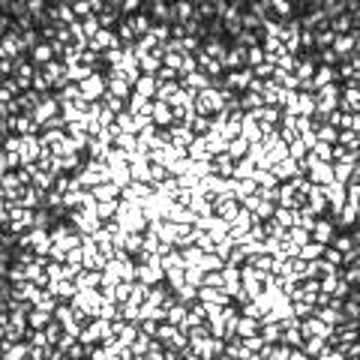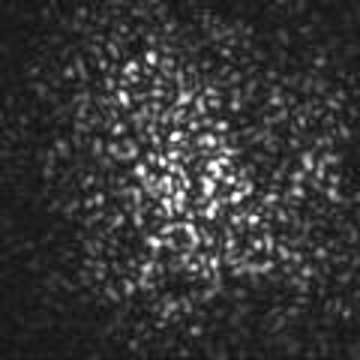Engineers like to make things that work. And if one wants to make something work using nanoscale components—the size of proteins, antibodies, and viruses—mimicking the behavior of cells is a good place to start since cells carry an enormous amount of information in a very tiny packet. As Erik Winfree, professor of computer science, computation and neutral systems, and bioengineering, explains, "I tend to think of cells as really small robots. Biology has programmed natural cells, but now engineers are starting to think about how we can program artificial cells.
Tech
Bacteria have developed many different ways of smuggling their toxic cargo into cells. Tripartite Tc toxin complexes, which are used by bacteria like the plague pathogen Yersinia pestis and the insect pathogen Photorhabdus luminescens, are particularly unusual. Stefan Raunser from the Max Planck Institute of Molecular Physiology in Dortmund and his colleagues from the University of Freiburg have produced extremely accurate and detailed images of these "toxic injections"; they reveal from where the molecule complexes take the energy to penetrate the cell membrane.
PROVIDENCE, R.I. [Brown University] — Pregnant and postpartum women with bipolar disorder more frequently have significant mental health and early mothering challenges than other perinatal women undergoing psychiatric treatment, according to a study in the Journal of Affective Disorders. The findings indicate the importance of properly identifying the disorder and developing specific treatments for women during and after pregnancy, the lead author said.
Producing second-generation biofuel from dead plant tissue is environmetally friendly - but it is also expensive because the process as used today needs expensive enzymes, and large companies dominate this market. Now a Danish/Iraqi collaboration presents a new technique that avoids the expensive enzymes. The production of second generation biofuels thus becomes cheaper, probably attracting many more producers and competition, and this may finally bring the price down.
When deciding what materials to use in building something, determining how those materials respond to stress and strain is often the first task. A material's macroscopic, or bulk, properties in this area — whether it can spring back into shape, for example — is generally the product of what is happening on a microscopic scale. When stress causes a material's constituent molecules to rearrange in a way such that they can't go back to their original positions, it is known as "plastic deformation."

This video shows the rapid "twinkling" or intensity fluctuations of the speckle pattern in a drop of unclotted whole blood. The rapid "twinkling" is due to the fast thermally-driven motion of blood cells that scatter light.
(Photo Credit: Seemantini Nadkarni)

Researchers from the National Institute of Standards and Technology (NIST) and the Food and Drug Administration (FDA) have demonstrated that they can make sensitive chemical analyses of minute samples of nanoparticles by, essentially, roasting them on top of a quartz crystal. The NIST-developed technique, "microscale thermogravimetric analysis," holds promise for studying nanomaterials in biology and the environment, where sample sizes often are quite small and larger-scale analysis won't work.*
CHAMPAIGN, Ill. — A multi-institutional team reports that it can increase sugarcane's geographic range, boost its photosynthetic rate by 30 percent and turn it into an oil-producing crop for biodiesel production.
These are only the first steps in a bigger initiative that will turn sugarcane and sorghum – two of the most productive crop plants known – into even more productive, oil-generating plants.
A tabletop device invented at Rice University can tell how efficiently a nanoparticle would travel through a well and may provide a wealth of information for oil and gas producers.
The device gathers data on how tracers – microscopic particles that can be pumped into and recovered from wells – move through deep rock formations that have been opened by hydraulic fracturing.
PHILADELPHIA – Researchers have identified a polio-like syndrome in a cluster of children from California over a one-year period, according to a case report released today that will be presented at the American Academy of Neurology's 66th Annual Meeting in Philadelphia, April 26 to May 3, 2014.
MADISON, Wis. — Generating electricity is not the only way to turn sunlight into energy we can use on demand. The sun can also drive reactions to create chemical fuels, such as hydrogen, that can in turn power cars, trucks and trains.
The trouble with solar fuel production is the cost of producing the sun-capturing semiconductors and the catalysts to generate fuel. The most efficient materials are far too expensive to produce fuel at a price that can compete with gasoline.
Amsterdam, February 21, 2014 – From 1971-1982 Air Force reservists, who flew in about 34 dioxin-contaminated aircraft used to spray Agent Orange and returned to the US following discontinuation of the herbicide spraying operations in the Vietnam War, were exposed greater levels of dioxin than previously acknowledged, according to a study published today in Environmental Research.
University of Colorado Boulder scientists have found a creative way to radically improve thermoelectric materials, a finding that could one day lead to the development of improved solar panels, more energy-efficient cooling equipment, and even the creation of new devices that could turn the vast amounts of heat wasted at power plants into more electricity.
An international team led by The University of Texas at Dallas has discovered that ordinary fishing line and sewing thread can be cheaply converted to powerful artificial muscles.
The new muscles can lift a hundred times more weight and generate a hundred times higher mechanical power than the same length and weight of human muscle. Per weight, they can generate 7.1 horsepower per kilogram, about the same mechanical power as a jet engine.
Researchers are using fibres from fishing line and sewing thread to create inexpensive artificial muscles that could be used in medical devices, humanoid robots, prosthetic limbs, or woven into fabrics.
In a study published today in Science, international researchers, including University of British Columbia Electrical and Computer Engineering professor John Madden and PhD candidate Seyed Mohammad Mirvakili, detail how they created inexpensive artificial muscles that generate far more force and power than human or animal muscles of the same size.